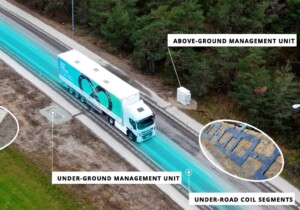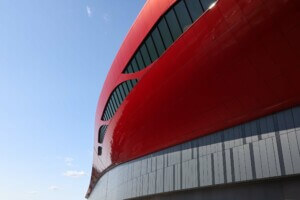Grand Central Madison, a new destination for the Long Island Rail Road (LIRR) beneath the eponymous Grand Central Terminal, is so deep below ground—17 stories, to be exact—that approaching trains begin their descent under the East River just as the Manhattan skyline comes into sight. Between bouts of darkness, lights flicker by in newly bored tunnels. And then, the train slows and soon arrives somewhere bright.
When officials from the Metropolitan Transportation Authority (MTA) held the signature ribbon-cutting ceremony in late January, the press release pitched it as history in the making. Grand Central Madison was “the first new major downtown rail terminal in the United States in 67 years”—which can be read as either exciting or, frankly, depressing. Also, the uniquely American price tag is a real downer: $11 billion, which is $7 billion overbudget thanks to contractor woes, delays, and labor costs, not counting debt service.
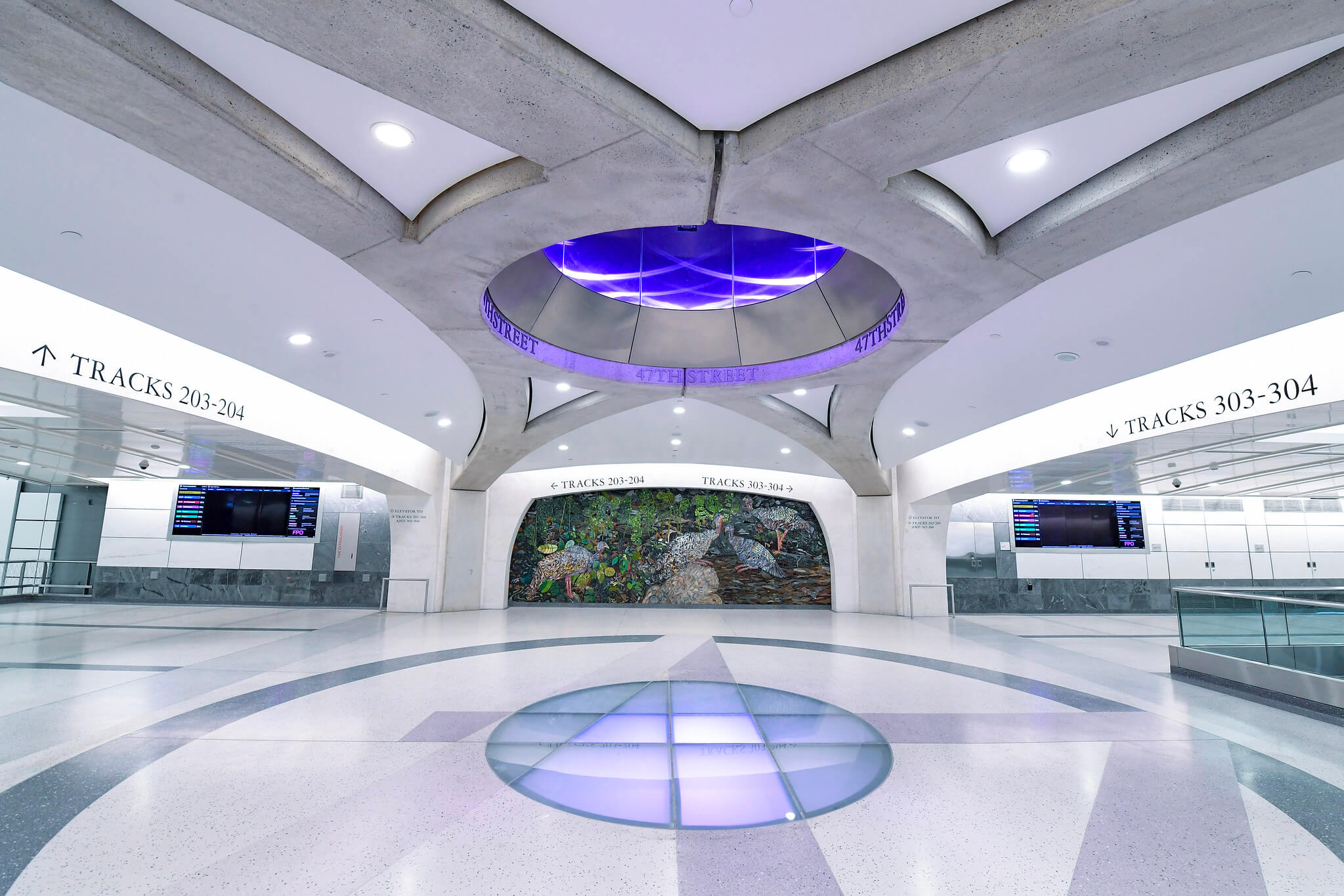
Still, Grand Central Madison marks the first expansion of the LIRR, the country’s busiest commuter rail system, since its inauguration in 1910. Until now, over 300,000 daily riders had two endpoints: Penn Station, or Brooklyn’s Atlantic Terminal. Now there’s a third option on Manhattan’s east side: Grand Central Madison, with its eight tracks, can carry up to 24 trains an hour.
Stepping off the train, the terminal’s vastness is all-consuming. Grand Central Madison spans the length of five city blocks below Madison Avenue, starting somewhere around 43rd Street and ending at 48th; the MTA deployed color-coded wayfinding (and 200 volunteers) for guidance. Above, the tracks of the Metro-North Railroad, which connects to the Hudson Valley and Connecticut, spring from the main floor of Grand Central Terminal; but here, below, the spine is one wide concourse, designed by AECOM and a litany of contractors, that filters riders down to platforms below via the longest escalators in the MTA system. It takes riders about a minute and a half to climb or descend. And, like the new LaGuardia Airport, the journey is the experience, perhaps calling any time saved into question.
But, at least, there’s something to look at along the way. Grand Central Madison is a shrine to New York’s might. Practically everywhere you look is a reminder as to why you’re standing on sacred ground: There are quotes from the likes of author Joan Didion and former mayor Ed Koch; the state’s emblem, deconstructed; and photo exhibits, one from the International Center for Photography dedicated to Paul Pfeiffer, a New York City street performer, and another on the epic engineering behind the space. When visiting, you get the sense that you’ll find a new feature each time; three separate trips have still not spawned a sighting of a tweet by Yoko Ono emblazoned on the wall, or the now-viral misspelling of Georgia O’Keeffe. (It’s been fixed.)

Outside of the art and design, the concourse is still mostly bare. None of the storefronts that line the concourse have opened yet. Full service started today; lately, service is limited to an hourly shuttle to Jamaica, another major hub within city limits. It can often feel like the terminal is still in beta mode: Many of the visitors walking through are there to browse, not buy. Much like the dining area upstairs in Grand Central Terminal, which includes an oyster bar and a Shake Shack, the hope is that, they will soon see Grand Central Madison as yet another destination—a place to peruse, shop, and, maybe, stay a while. That, of course, is if they can find somewhere to sit: Grand Central Madison has a small waiting room with a few seats, but otherwise, tables and chairs in the larger terminal are either standing-only or limited to paying customers at eateries.
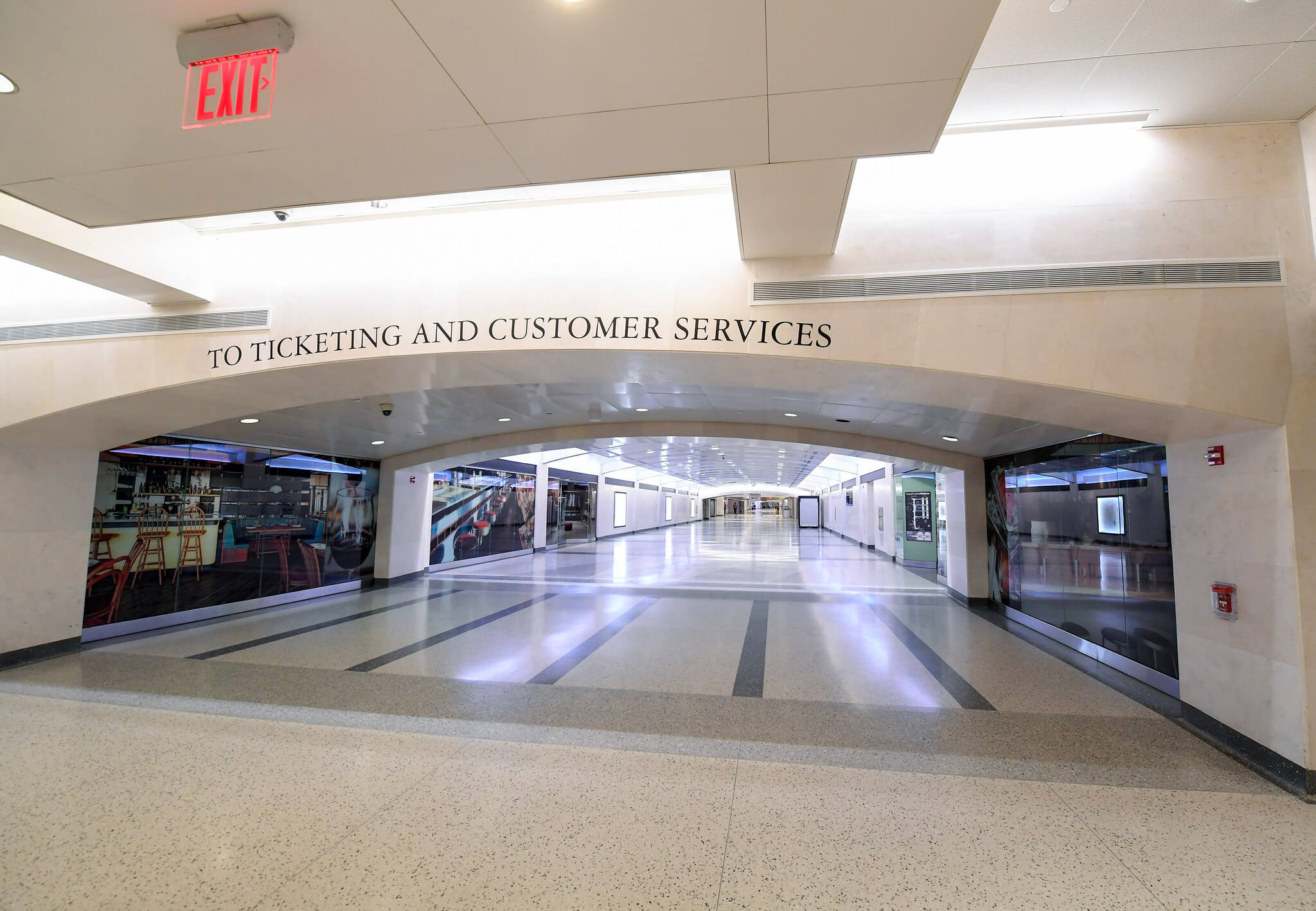
The placemaking efforts have a new meaning in the wake of a pandemic. The LIRR is still seeing 30 percent fewer daily riders than it did in 2019—in other words, the system is missing about 100,000 people. Once pleading for white-collar workers to return to the office, business leaders and elected officials are accepting the chance that it might not happen. When Governor Andrew Cuomo toured the station in May 2021, months before he’d resign in light of sexual harassment allegations, he acknowledged the new reality that the terminal entered. “Businesses like to sit around the table and bounce ideas off each other. Just make it possible and make it attractive,” he told reporters then. “That’s what this is all about.”
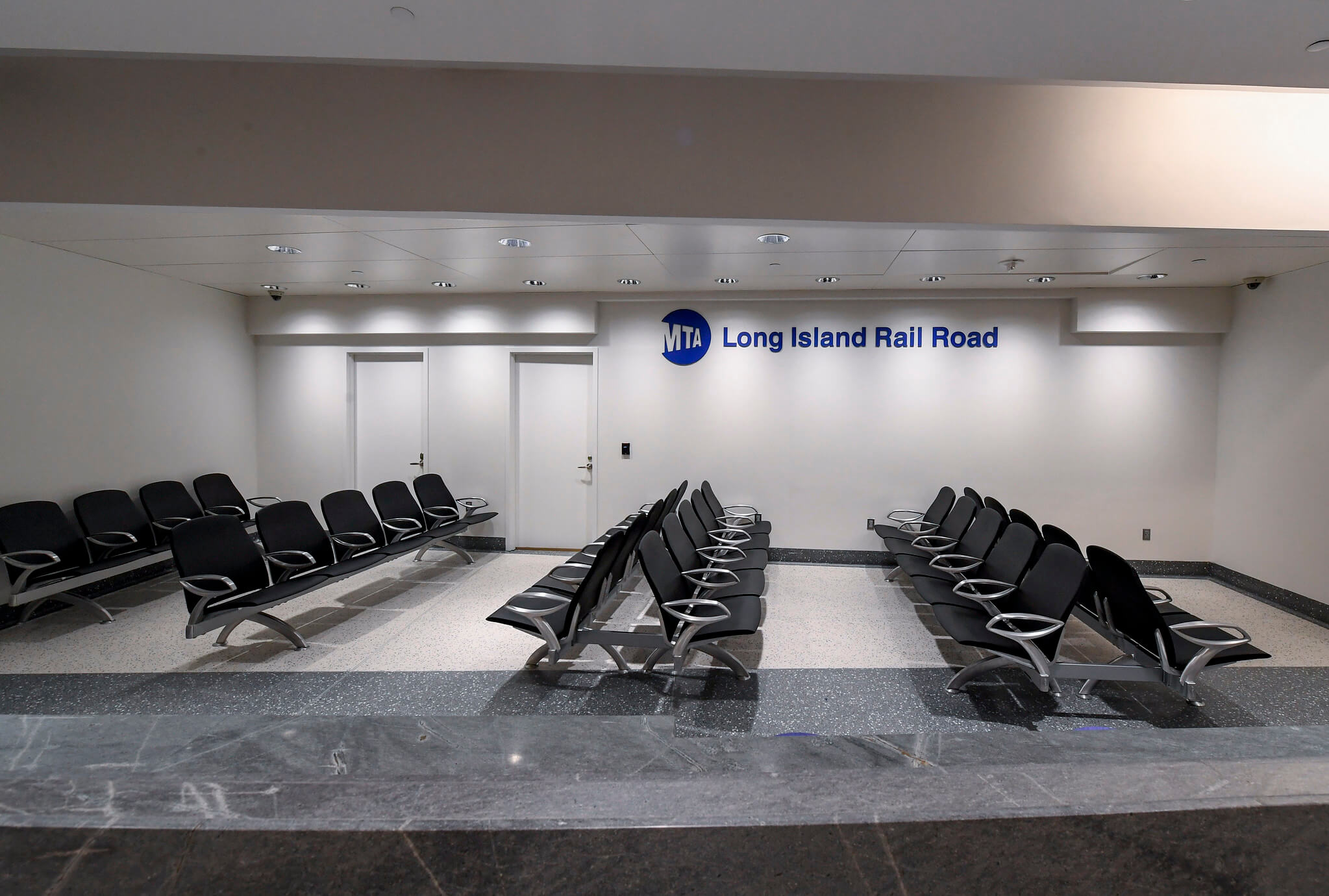
The pandemic was just one of many plot twists for the project. The idea of linking Long Islanders to Manhattan’s East Side was kicked around for decades, but the 1970s fiscal crisis doomed aspirations. (The Second Avenue Subway, whose second phase is now underway, suffered a similar fate.) The 1990s—the state’s last era of Republican rule—revived interest, as suburban lawmakers saw an opportunity. Cuomo, once governor, urged action on “East Side Access” in a bid to lock down their support.

Unlike Moynihan Train Hall, the flashy new hub near Penn Station with even less public seating, there is utility to Grand Central Madison. The state’s two commuter rail systems—the Metro-North and Long Island Rail Roads—are now just an escalator apart, as are four subway lines and a crosstown shuttle. There are more trains to and from Long Island than ever before; ironically, this is now a pretext by Kathy Hochul, Cuomo’s successor, to spur development in those very same suburbs.
But like every mega-project in this city, you must swallow your skepticism to enjoy it. Oh, what a beautiful mosaic by Yayoi Kusama. (Why did this place open 14 years later than expected?) Wow, Kiki Smith, too. (Wouldn’t it have been smarter to spend the funds modernizing the subway?) Don’t forget the neat subway-style map of Long Island. (Did we really need a new terminal, with all those empty Metro-North tracks?) This place is stunning. (How are the escalators already breaking?)
Over time, though, those questions will fade to black, like a train leaving the station. The terminal will be absorbed into the cityscape, warts and all, and the next mega-project will make us forget about this one. (The Penn Station redevelopment is a stellar candidate, if it happens.) New Yorkers will adapt for efficiency, as they always do, like finding the spot on a platform to perfectly align with an exit at their destination, or knowing which entrance takes them directly to their track. That tack, as one transit cop told a passenger, will come in handy in this cavern.
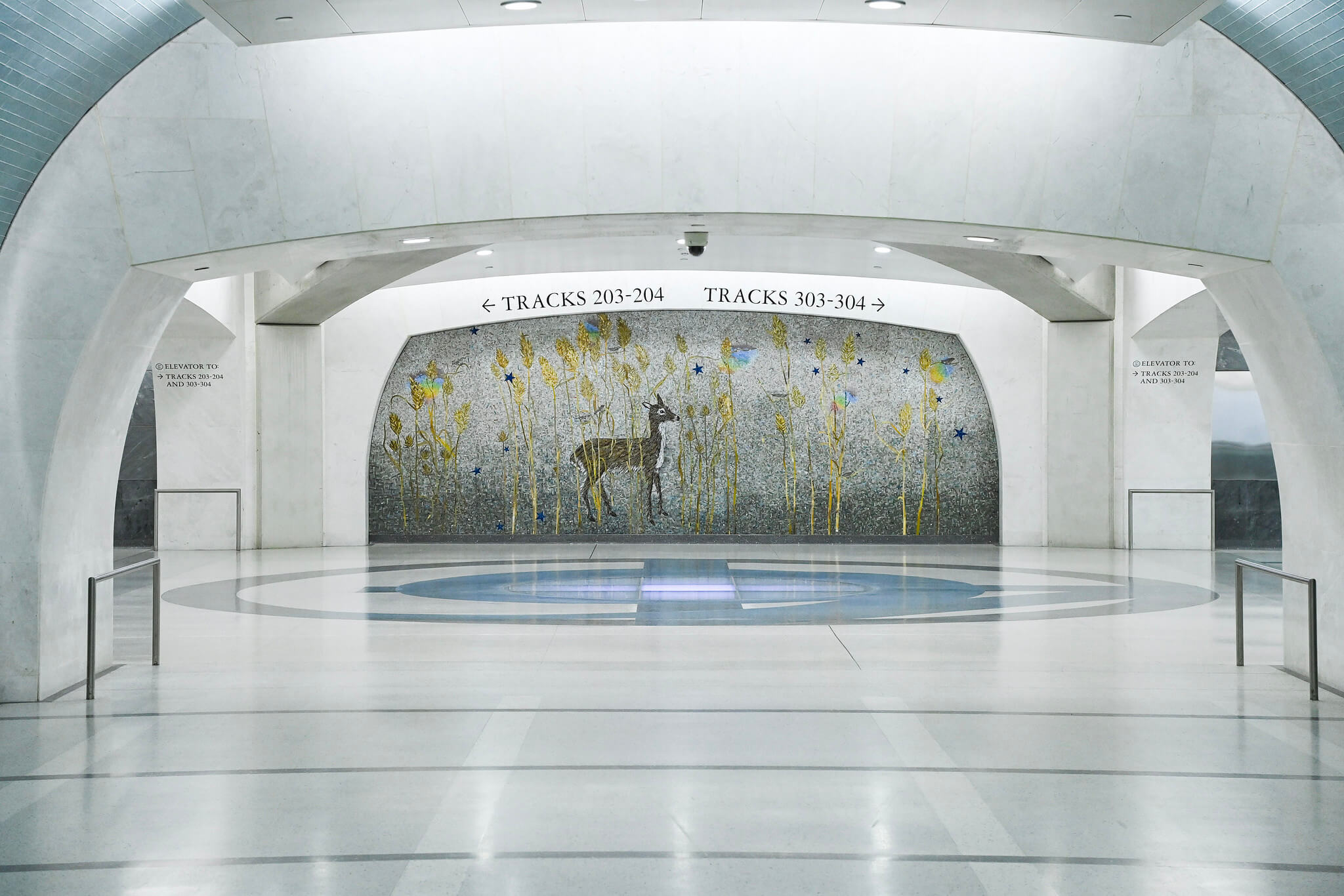
In an age of such distrust, there is value in the awe of public works, even if we’re not sure where those works will take us. “This makes travel so convenient,” one woman exclaimed to a LIRR employee during a recent ride. “I’m going to write a letter telling them that.” Go ahead.
John Surico is a New York–based journalist and researcher who writes about mobility and open space.









